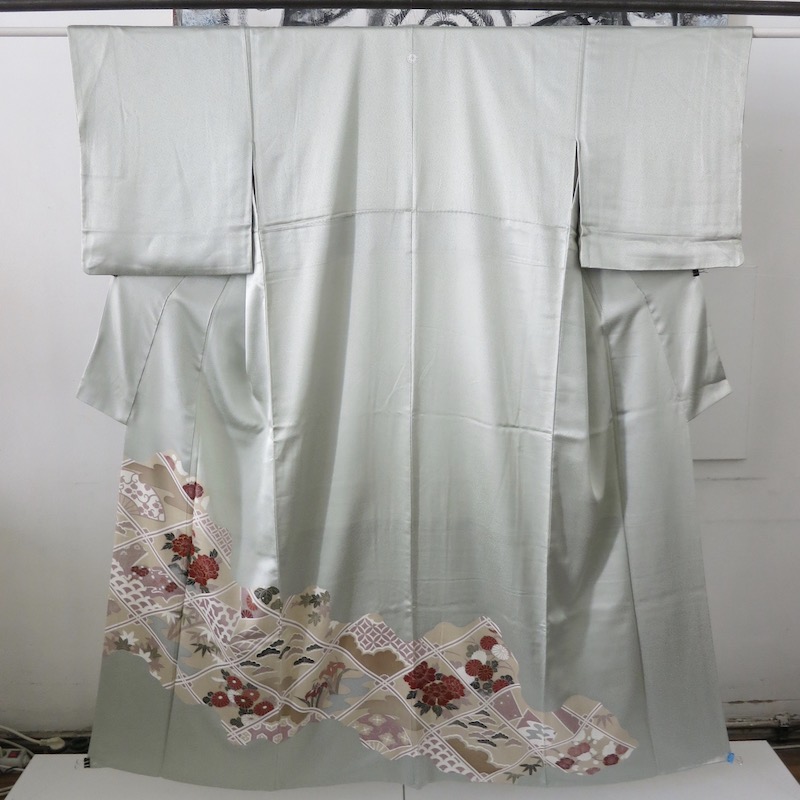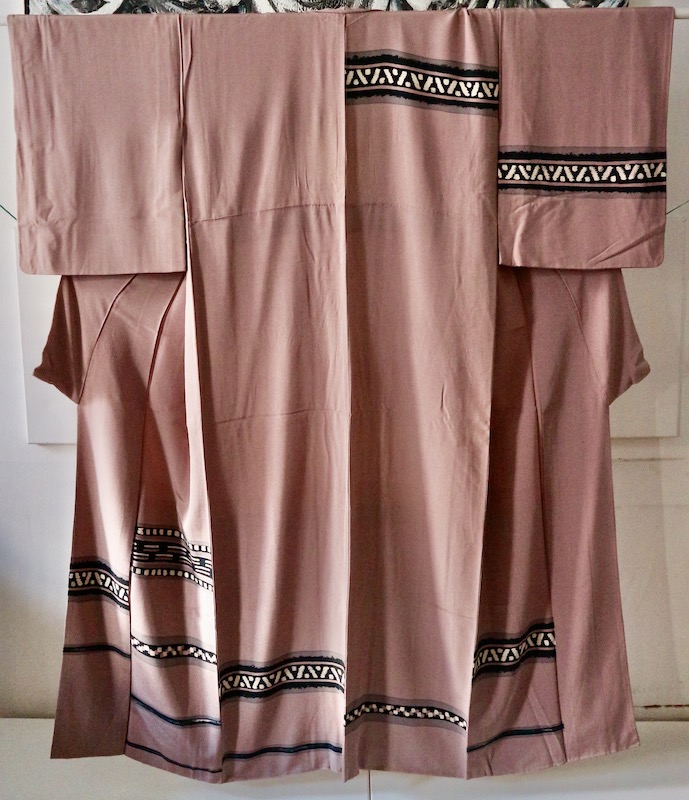Types of Kimono
Kuro Tomesode 黒留袖

Kuro Tomesode 1920´s 
Kuro Tomesode 1970´s
The first dress for a special occasion worn by a married woman. Kurotomesode is black and has pattern only on the Skirt-part. Always with 5 MON. When the woman turned 18 years old or when she got married, the long-sleeved Kimono was shorted. That custom is called Tomesode. Tomesode was a normally Kimono for adult woman not only for a special occasion.
But around the beginning of the 19th century, this custom is changed, first class formal Kimono for married women is Black Kimono with Edo-tsuma( Pattern only under half of Kimono) 5 Mon) . This is Kuro-Tomesode.
Now a days Kurotomesode is worn by mothers of bride and groom and Nakoudo ( who attend wedding) and family of bride and groom.
Iro Tomesode

Iro Tomesode 1920´s 
Iro Tomesode 1980´s
Iro Tomesode with 5 Mon is equivalent to Kuro Tomesode. It is the first class dress for celebration ceremony , even unmarried women can wear.Japanese formal and semi formal Kimono are basically classified according to the number and type of Mon. Kuro Tomesode have to have 5 Mon Hinata Dyeing, but Iro Tomesode can have 1 or 3 or 5 Mon.
Occasion
with 5 Mon:Wedding Party for family of bride and groom, with 1 or 3 Mon : Official Party, Special tea ceremony
Iro Muji

1 Mon 
Iromuji
Iro 色 color and Muji 無地 no pattern , so Iromuji Kimono has no pattern and a single color. Depending on the number of Mon, it is either formal or semi-formmal, It´s very convenient to habe one Iromuji Kimono with one Mon. You can dress up or down depending of the coordination of the Obi.
Furisode

XL Furisode 
L Furisode 
M Furisode 
S Furisode
Furiosede 振袖
First class dress of an unmarried woman. The longer the sleeve length, the higher the dignity.The name furisode originated in the early Edo period. It was worn by unmarried women up to the age of 18 and was a symbol of their youth.
Sleeve length:
大振袖 Oohufurisode XL125cm 振袖 Furisode L114cm 中振袖chuufurisode M 87-106cm 小振袖S Kofurisode-76cm-86cm
Occasion
- Oofurisode :Weddingkimono. Furiose
- Furiose: Wedding party as a guest, Official party
- Chufurisode, Kofurisode: new year tea ceremony, party
Houmongi 訪問着
Houmongi , it was named as Houmongi in the Meiji era as the same as English visiting dress. At this time Houmongi was social wear with 3 Mon. Now Houmongi with only one Mon oder without Mon is normal.
Houmongi is created by the method called “eba”; all the patterns on a kimono continues as if it is one big picture regardless of seam or stitch. “Eba” is a kind of pattern-making in kimono, and refers to the way a pattern continues on a seam. A pattern is drawn like a painting
Occasion:wedding ceremony, a class reunion,, a tea party, various parties.
Tsukesage 付下げ訪問着

Tsukesage antique 
Tsukesage 1960er
Tsukesage ist a simolification of Houmongi. Tsukesage patterns on a kimono is not continues. This simple Kimono made the time when luxury was banned during world war.
Occasion: You can dress up or down depending of the coordination of the Obi. ceremony, tea ceremony, casual party
Komon 小紋
Komon (fine-patterned dyeing) is a type of textile dyed with repeated minute patterns. Komon (fine-patterned dyeing) commenced in the Muromachi Period (1337-1573). By the Edo Period (1603 -1867), fine-patterned dyeing came to be represented by the art of stencil dyeing.
It’s like a printed silk dress.
Occasion: visiting theater, casual party, shopping, meeting… If you have one Komon, it will be very useful.



